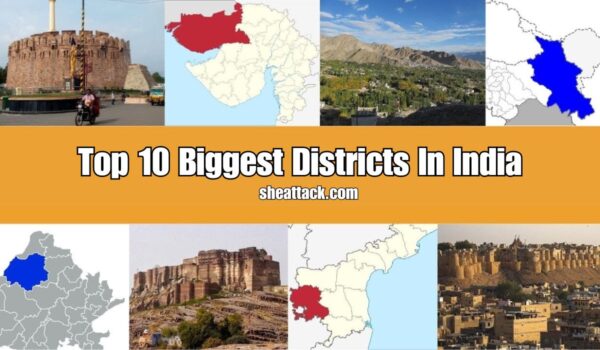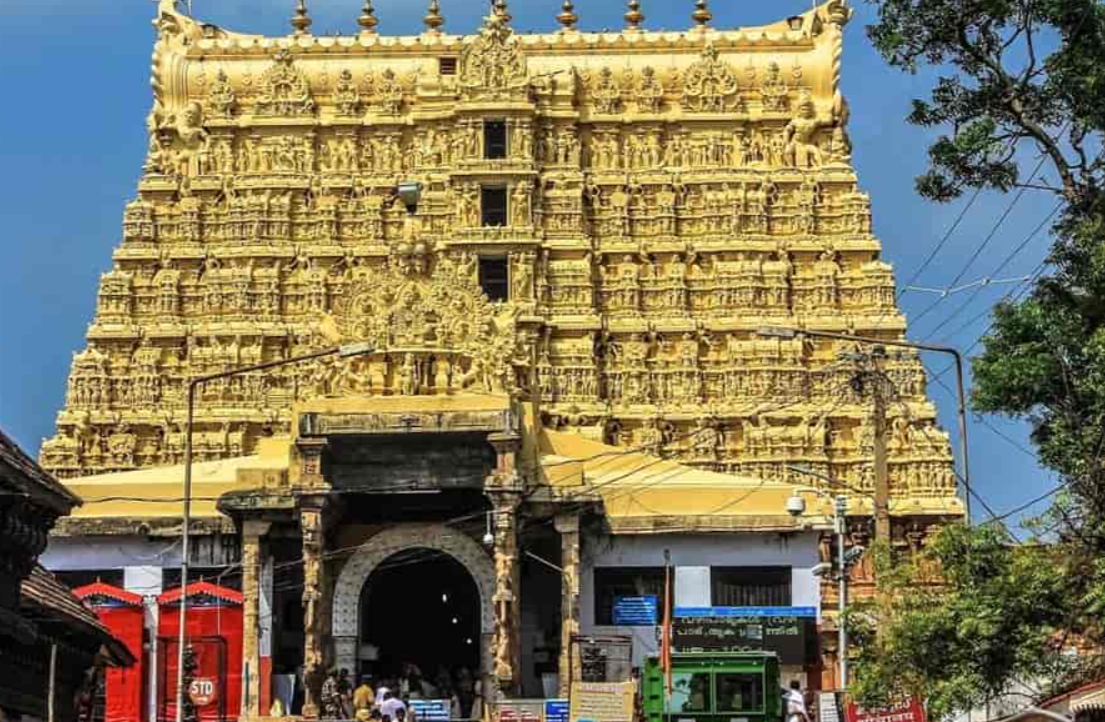India, with its vast and diverse landscape, is divided into a staggering 766 districts. Among these, certain districts stand out due to their sheer size, encompassing large expanses of land. Rajasthan, being the largest state in India, is home to some of these massive districts. However, it’s not just Rajasthan that boasts of large districts; there are significant districts outside this state as well. In this article, we will explore the top 10 biggest districts in India as of 2024.
Top 10 Biggest Districts In India
1. Kachchh (Kutch), Gujarat
Topping the list is Kachchh, also known as Kutch, which is the largest district in India. Covering an impressive 45,674 square kilometers, Kachchh is located in the far western part of Gujarat. This district is renowned for its vast salt desert, the Rann of Kutch, which transforms into a sparkling white expanse during the dry season. Beyond its impressive size, Kachchh is a cultural and natural gem, featuring the Great Rann, Little Rann, and diverse wildlife. During festivals, this district attracts numerous tourists from both India and abroad, showcasing its unique atmosphere and vibrant culture.
2. Leh, Ladakh
Next in line is Leh, a prominent district in the Union Territory of Ladakh, which spans 45,110 square kilometers. Known for its breathtaking landscapes, high-altitude deserts, and rugged mountains, Leh is a haven for adventure enthusiasts and nature lovers. The district is dotted with significant Buddhist monasteries influenced by Tibetan culture. Leh’s harsh climate contrasts sharply with its extreme beauty, making it a must-visit destination. The Hemis Festival, with its colorful celebrations, is a highlight of Leh’s cultural calendar.
3. Jaisalmer, Rajasthan
Jaisalmer, often referred to as the “Golden City,” ranks third with a sprawling area of 38,401 square kilometers. Located in the heart of the Thar Desert, this district is distinguished by its golden-hued sandstone architecture. The Jaisalmer Fort, a living fort, is a major attraction, drawing visitors from across the globe. The Desert Festival, featuring traditional music, dance, and art, is a vibrant cultural event that highlights the region’s rich heritage.
4. Bikaner, Rajasthan
Bikaner occupies the fourth spot with an area of 30,239 square kilometers. Situated near the Pakistan border in the Thar Desert, Bikaner is steeped in history and renowned for its architectural marvels such as Junagarh Fort and the Karni Mata Temple, famous for its rat population. The district is also home to the largest Camel Breeding Farm in Asia and is known for its delectable Bikaneri bhujia snacks.
5. Barmer, Rajasthan
Barmer is fifth on the list, encompassing 28,387 square kilometers. Located in western Rajasthan, Barmer is another significant part of the Thar Desert. Despite its arid environment, modern farming techniques have enabled it to thrive. The district is culturally rich, known for its folk music, dance, and traditional handicrafts, which form a major part of its economy.
6. Jodhpur, Rajasthan
Jodhpur, often called the “Blue City” due to its distinctive blue-painted houses, covers an area of 22,850 square kilometers. Located in central Rajasthan, this district is famous for the Mehrangarh Fort and its vibrant cultural scene. Jodhpur is not only a major tourist destination but also a cultural hotspot, reflecting the traditional lifestyle and heritage of Rajasthan.
7. Anantapur, Andhra Pradesh
Moving south to Andhra Pradesh, Anantapur covers approximately 19,130 square kilometers. Known for its rugged terrain and open fields, Anantapur plays a significant role in the state’s agricultural sector. The district is rich in historical landmarks, including the Lepakshi Temple, which is renowned for its architectural splendor.
8. Mahbubnagar, Andhra Pradesh
Mahbubnagar, also known as Palamoor, spans 18,432 square kilometers. This district blends historical significance with modern growth, featuring landmarks such as the Jogulamba Temple and flourishing agricultural practices. With its proximity to Hyderabad, Mahbubnagar is rapidly developing, with a growing focus on small-scale industries alongside its agricultural base.
9. Nagaur, Rajasthan
Nagaur, with an area of 17,718 square kilometers, is another large district in Rajasthan. Known for its historical and cultural richness, Nagaur hosts one of India’s largest cattle fairs, attracting large crowds annually. The district’s agriculture is predominantly traditional, with crops like Bajra and Wheat being cultivated.
10. Kurnool, Andhra Pradesh
Finally, Kurnool occupies the tenth position, covering 17,658 square kilometers. This district is known for its historical sites such as Kurnool Fort and the Belum Caves. Besides its historical significance, Kurnool is an important agricultural region, benefiting from the fertile lands around rivers like the Tungabhadra and Handri.
Conclusion
In summary, the diversity among the biggest districts in India is remarkable. From the vast salt deserts of Kachchh to the historical richness of Kurnool, each of these districts offers unique features and cultural significance. Whether you are keen to explore the largest districts in India or simply wish to learn more about their distinctive characteristics, this list provides a comprehensive overview of the top ten largest districts in the country.



